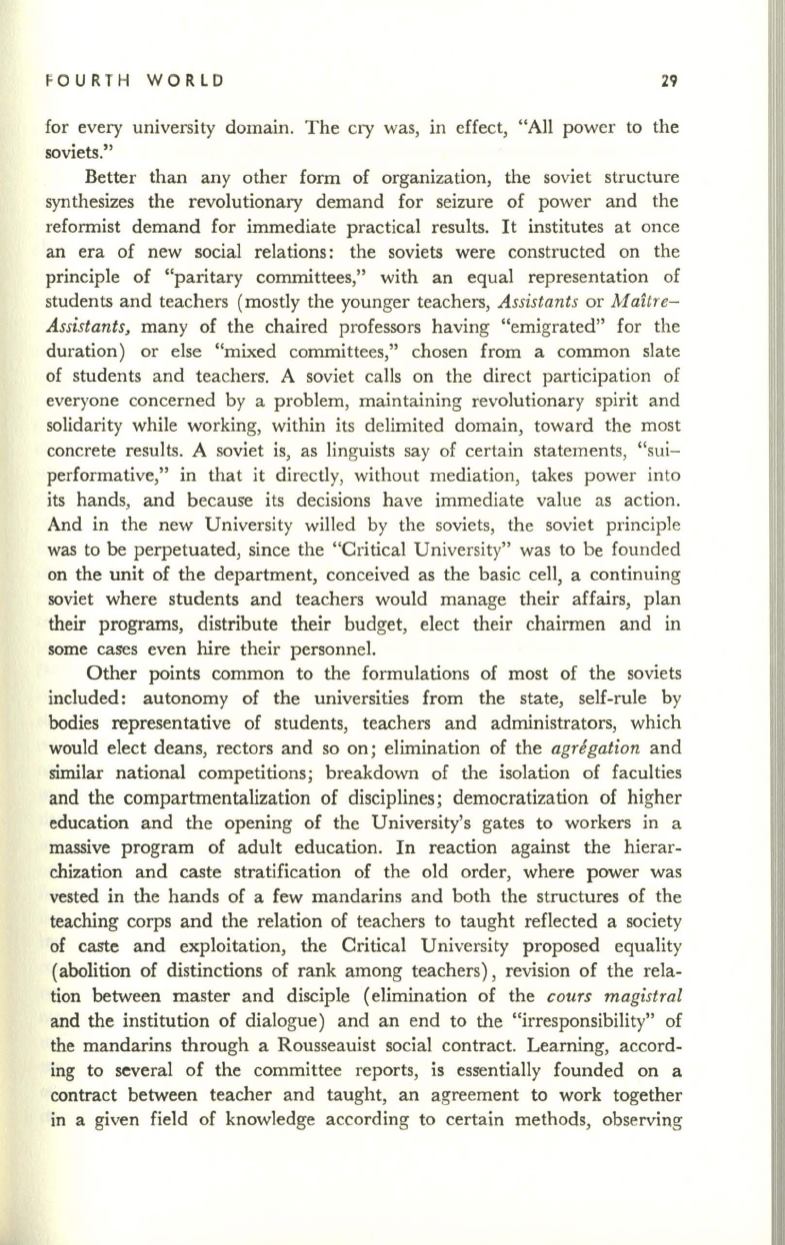
FOURTH WORLD
29
for every university domain. The cry was, in effect, "All power to the
soviets."
Better than any other form of organization, the soviet structure
synthesizes the revolutionary demand for seizure of power and the
reformist demand for immediate practical results.
It
institutes at once
an era of new social relations: the soviets were constructed on the
principle of "paritary committees," with an equal representation of
students and teachers (mostly the younger teachers,
Assistants
or
Maitre–
Assistants,
many of the chaired professors having "emigrated" for the
duration) or else "mixed committees," chosen from a common slate
of students and teachers. A soviet calls on the direct participation of
everyone concerned by a problem, maintaining revolutionary spirit and
solidarity while working, within its delimited domain, toward the most
concrete results. A soviet is, as linguists say of certain statements, "sui–
performative," in that it directly, without mediation, takes power into
its hands, and because its decisions have immediate value as action.
And in the new University willed by the soviets, the soviet principle
was to
be
perpetuated, since the "Critical University" was to be founded
on the unit of the department, conceived as the basic cell, a continuing
soviet where students and teachers would manage their affairs, plan
their programs, distribute their budget, elect their chairmen and in
some cases even hire their personnel.
Other points common to the formulations of most of the soviets
included: autonomy of the universities from the state, self-rule by
bodies representative of students, teachers and administrators, which
would elect deans, rectors and so on; elimination of the
agregation
and
similar national competitions; breakdown of the isolation of faculties
and the compartmentalization of disciplines; democratization of higher
education and the opening of the University's gates to workers in a
massive program of adult education. In reaction against the hierar–
chization and caste stratification of the old order, where power was
vested in the hands of a few mandarins and both the structures of the
teaching corps and the relation of teachers to taught reflected a society
of caste and exploitation, the Critical University proposed equality
(abolition of distinctions of rank among teachers), revision of the rela–
tion between master and disciple (elimination of the
COUTS
magistral
and the institution of dialogue) and an end to the "irresponsibility" of
the mandarins through a Rousseauist social contract. Learning, accord–
ing to several of the committee reports, is essentially founded on a
contract between teacher and taught, an agreement to work together
in a given field of knowledge according to certain methods, observing


